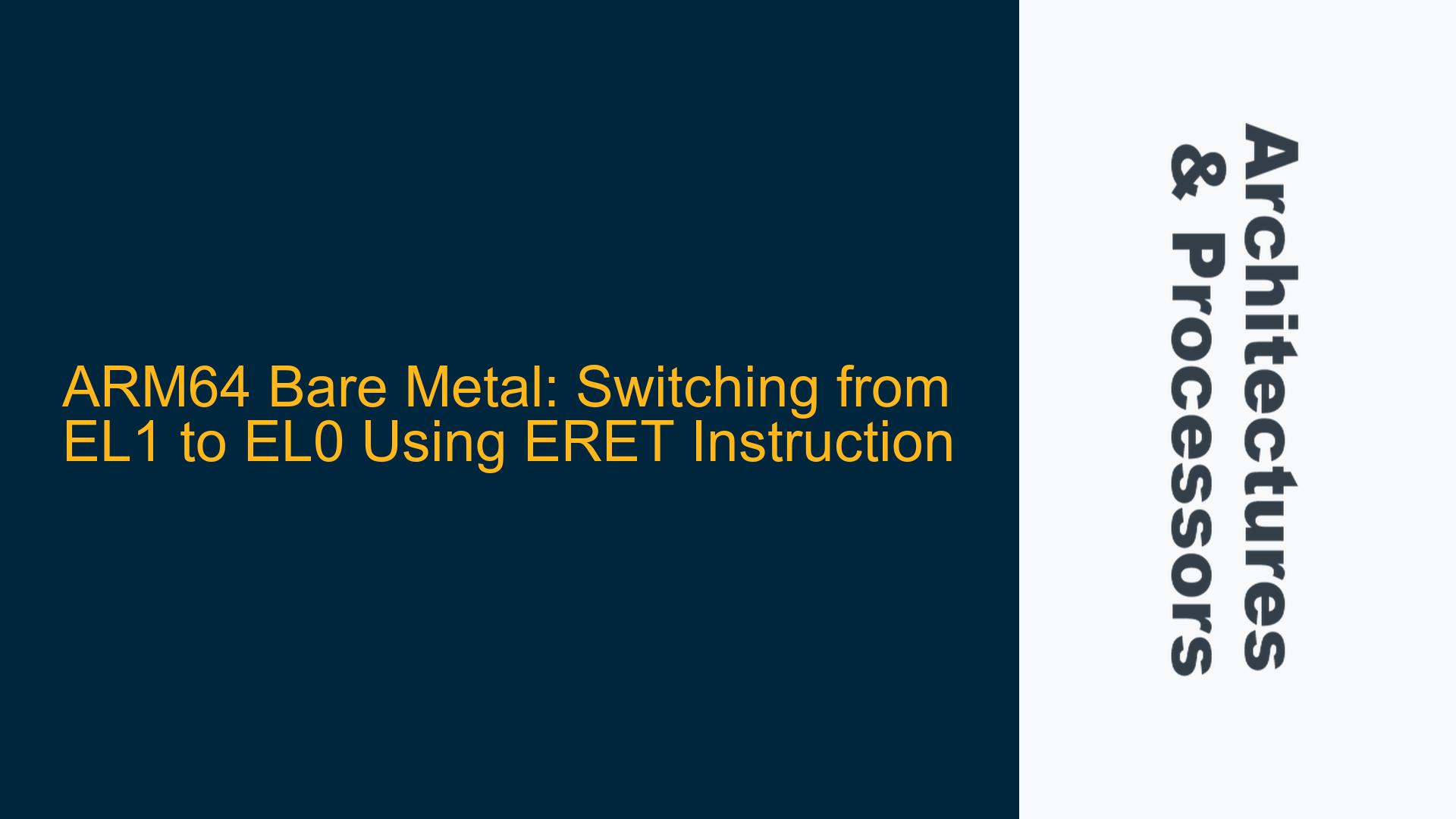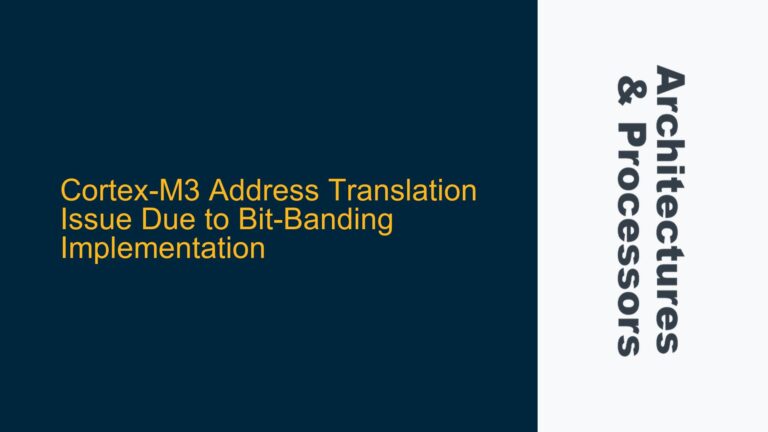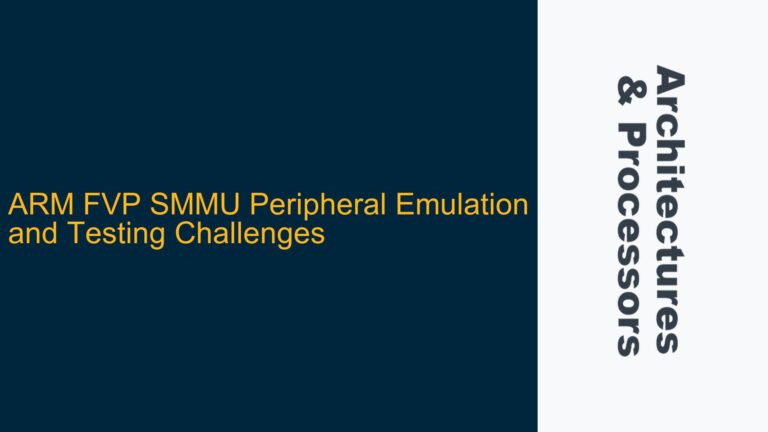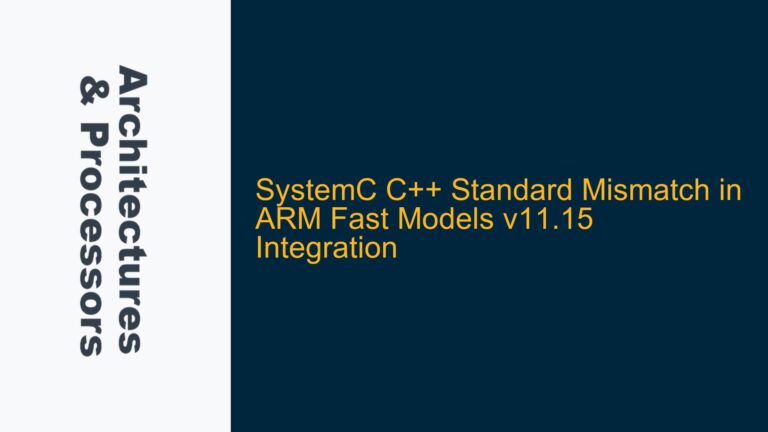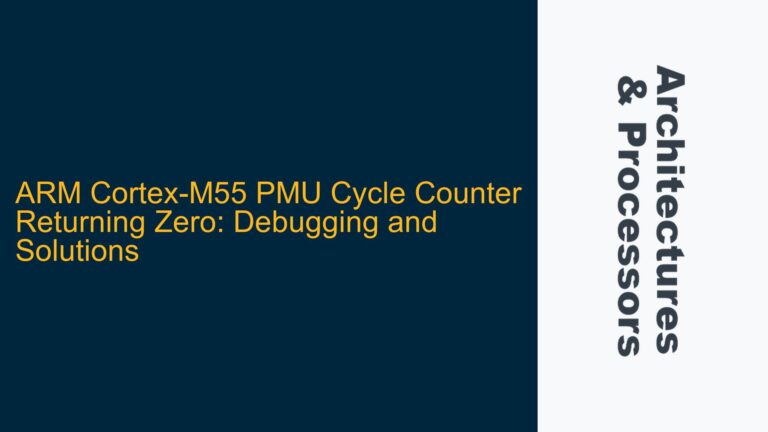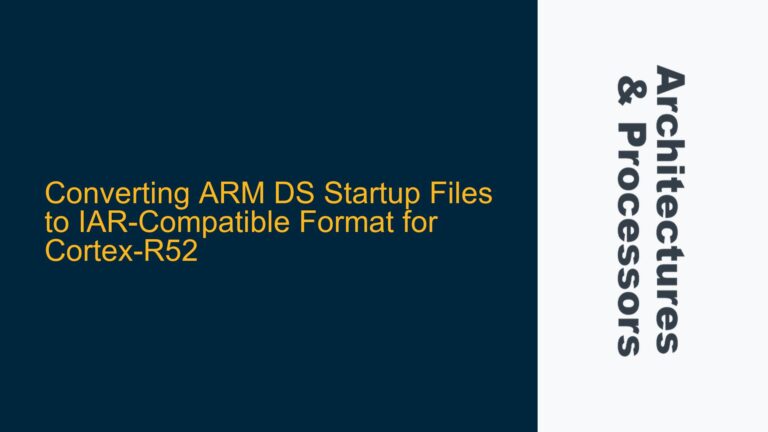Understanding the Challenge of Exception Level Transition from EL1 to EL0
Transitioning between Exception Levels (ELs) in ARM64 architectures, particularly from EL1 to EL0, is a critical operation in bare-metal environments. This transition is essential for scenarios such as running user-space applications (EL0) from a kernel or hypervisor (EL1). The process involves manipulating specific system registers and executing the ERET instruction, which returns from an exception and changes the Exception Level. However, this operation is not as straightforward as it seems, and improper handling can lead to system crashes or undefined behavior.
The core challenge lies in correctly configuring the Saved Program Status Register (SPSR_EL1) and the Exception Link Register (ELR_EL1) before executing the ERET instruction. The SPSR_EL1 register holds the processor state that will be restored upon executing ERET, including the target Exception Level. The ELR_EL1 register contains the address to which the processor will return after the transition. Misconfiguring these registers or overlooking additional requirements, such as stack pointer initialization and memory access permissions, can prevent a successful transition.
Common Pitfalls in Configuring SPSR_EL1 and ELR_EL1 for EL0 Transition
One of the most common issues when attempting to switch from EL1 to EL0 is the incorrect configuration of the SPSR_EL1 register. The SPSR_EL1 register must be set to reflect the desired state of the processor after the transition, including the target Exception Level (EL0). The M[3:0] bits in SPSR_EL1 control the Exception Level and the execution state (AArch64 or AArch32). For a transition to EL0 in AArch64, the M[3:0] bits must be set to 0b0000. Additionally, other fields in SPSR_EL1, such as the interrupt mask bits (e.g., DAIF), must be configured appropriately to ensure that interrupts are handled correctly after the transition.
Another frequent mistake is failing to set the ELR_EL1 register to the correct address of the function or code that should execute in EL0. The ELR_EL1 register must point to the entry point of the EL0 code, and this address must be valid and accessible in the EL0 memory space. If the ELR_EL1 register points to an invalid or inaccessible address, the ERET instruction will result in an exception or undefined behavior.
Furthermore, the stack pointer (SP) must be initialized correctly for the EL0 environment. The SP_EL0 register is used in EL0, and it must be set to a valid stack address before the transition. If the stack pointer is not initialized, the EL0 code may attempt to access an invalid memory location, leading to a crash.
Step-by-Step Guide to Implementing a Successful EL1 to EL0 Transition
To achieve a successful transition from EL1 to EL0, follow these detailed steps:
-
Configure SPSR_EL1: Set the M[3:0] bits to 0b0000 to indicate a transition to EL0 in AArch64. Ensure that other fields in SPSR_EL1, such as the interrupt mask bits (DAIF), are configured appropriately. For example, clear the interrupt mask bits to enable interrupts in EL0 if needed.
-
Set ELR_EL1: Load the ELR_EL1 register with the address of the function or code that should execute in EL0. Ensure that this address is valid and accessible in the EL0 memory space. For example, if the EL0 code is located at address 0x400000, set ELR_EL1 to this value.
-
Initialize SP_EL0: Set the SP_EL0 register to a valid stack address for the EL0 environment. The stack should be allocated in a memory region that is accessible in EL0. For example, if the stack is located at address 0x80000, set SP_EL0 to this value.
-
Execute ERET: Perform the ERET instruction to transition from EL1 to EL0. The processor will use the values in SPSR_EL1 and ELR_EL1 to change the Exception Level and jump to the specified address.
Here is an example of how this might be implemented in assembly:
// Assume x0 contains the address of the EL0 function
// Assume x1 contains the stack pointer for EL0
// Set SPSR_EL1 for EL0 transition
MOV x2, #0x0 // M[3:0] = 0b0000 (EL0 in AArch64)
MSR SPSR_EL1, x2 // Load SPSR_EL1 with the desired state
// Set ELR_EL1 to the EL0 function address
MSR ELR_EL1, x0 // Load ELR_EL1 with the address of the EL0 function
// Set SP_EL0 to the EL0 stack pointer
MSR SP_EL0, x1 // Load SP_EL0 with the stack pointer for EL0
// Perform the ERET instruction to transition to EL0
ERET // Execute ERET to switch to EL0
-
Verify Memory Access Permissions: Ensure that the memory regions accessed by the EL0 code have the correct permissions. The MMU (Memory Management Unit) must be configured to allow access to the EL0 code and stack in EL0. For example, the memory region containing the EL0 code should be marked as executable, and the stack region should be marked as readable and writable.
-
Handle Interrupts and Exceptions: If interrupts are enabled in EL0, ensure that the appropriate exception handlers are in place. The exception vectors should be configured to handle any interrupts or exceptions that may occur in EL0. For example, if an interrupt occurs in EL0, the processor should jump to the correct exception handler in EL1.
-
Test and Debug: After implementing the transition, thoroughly test the system to ensure that the transition works as expected. Use a debugger to step through the code and verify that the registers are set correctly before executing the ERET instruction. Check for any exceptions or crashes that may indicate an issue with the transition.
By following these steps, you can successfully transition from EL1 to EL0 in a bare-metal environment. Pay close attention to the configuration of SPSR_EL1, ELR_EL1, and SP_EL0, as well as the memory access permissions and exception handling, to ensure a smooth and reliable transition.
